Day 6, midway thru' the trip and in the middle of Turkey for the next two days. Our bus arrived at Nevşehir bus station in the morning. It was foggy and freezing cold! Temperature had dropped to sub zero.

We hustled to get our luggage and were ushered into a toasty tour agency. As we waited for our bus to Ürgüp, they tried to convinced us in getting a tour package. It was a few bucks cheaper than the day tours our hotel had booked for us. We decided to stick to our choice as it was irritating of them to hassle us into buying their tour packages.
At Ürgüp, our hotel picked us up from the bus station in a mini-bus. Our hotel, Cappadocia Cave Inn Hotel, is a ten minutes walk from town centre. It is converted from a 100 years old family house. Carved out of the sandstone, the rooms were really impressive.
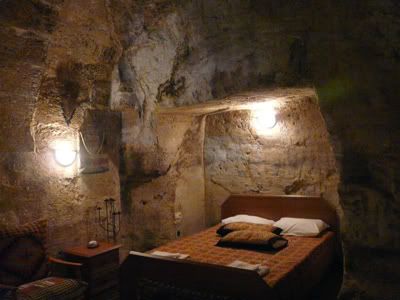
The hotel owner, Mr Omer, had previously communicated with me closely by email since booking the rooms, and provided us with some useful information.
We were promptly served with apple tea. 发发 took a walk around to grab some breakfast for us, while I brushed my teeth and unsuccessfully tried to bathe. It was too cold!
Our tour guide arrived at 9 am. He is the owner of the tour agency. A Canadian lady joined us in the tour. She is 60+, on a short to Turkey from UK where she visited her daughter. Tho' a little on the plump side, she was still quite fit and not look her age at all. From now on, the description gets a little fuzzy as the guide wasn't very clear in explaining where we went.
The girls "enjoying" the breakfast in the bus, on our way to the first destination.
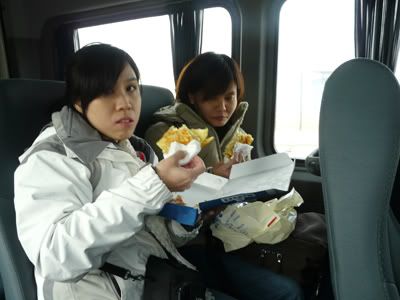
Our first stop was the 3km hike of the Rose Valley.
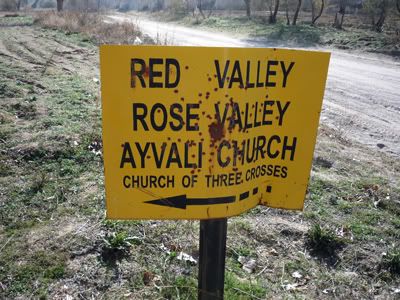
After the initial introduction, the guide was mostly yakking on his phone. Luckily, the scenery was really breathtaking.
The landscape of Cappadocia was formed from the remains of the volcano mountains Erciyes, Hasandag and Gulludag, millions of years ago. The combination of erosion by rain, water from rivers and lake, and strong winds, resulted in the formation of the peculiar landscape. Rose Valley was named after the pink tints visible in some of the weathered rocky sides.
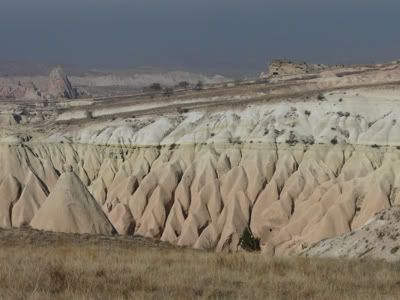
The early Christians inhibited the caves carved out from the rocks. Some of these caves used to be monasteries, churches and chapels.
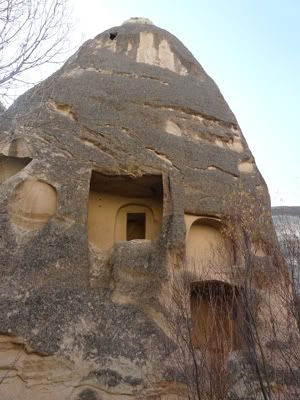
Beautiful frescoes were revealed as the walls of the formations eroded over the years...

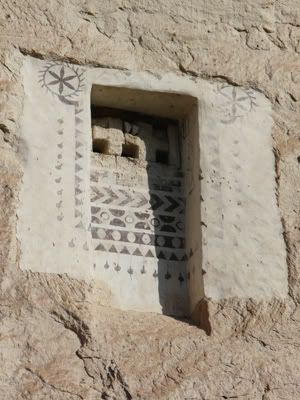
We climbed into some of the rock houses...
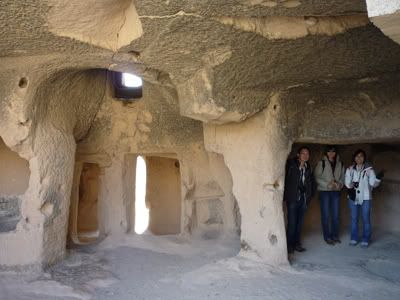
This used to be a fireplace where the inhabitants cooked...
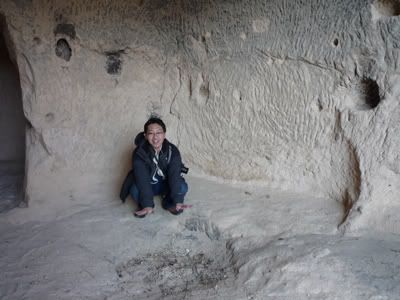
But most of the time, we were out enjoying the fantastic scenery and bright sun which was not warm at all!
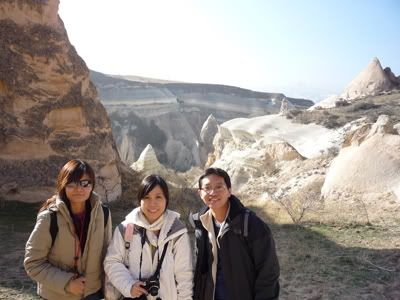
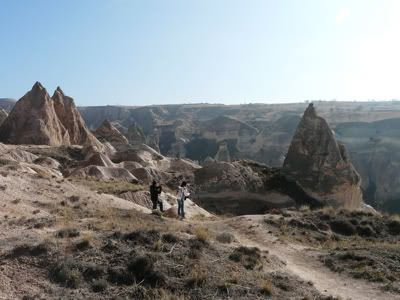
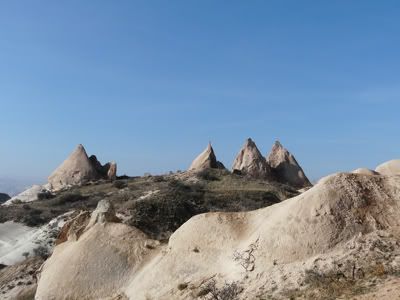
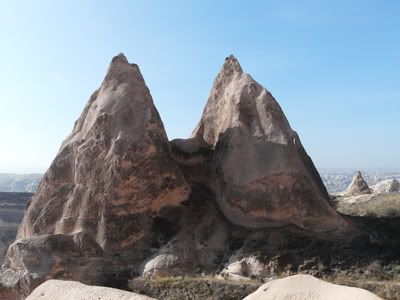
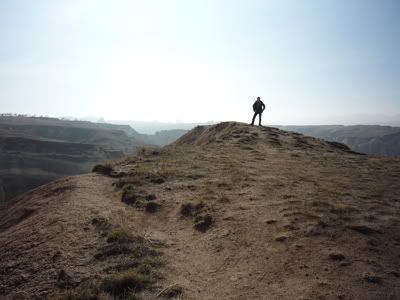
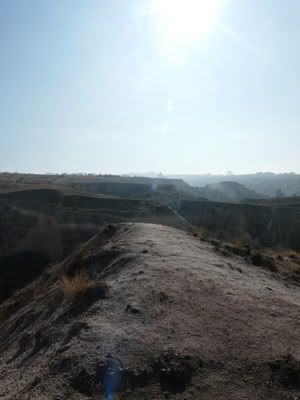
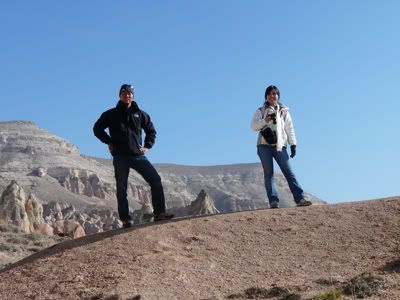
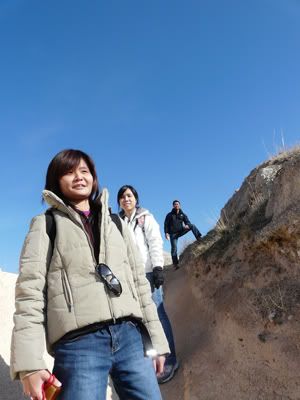
Occasionally, planes were spotted flying thru' the clear blue sky!

Before lunch, we visited one of the old village.

At noon, as the prayers resonated the valley, a doggie crooned along at a collapsed mosque.
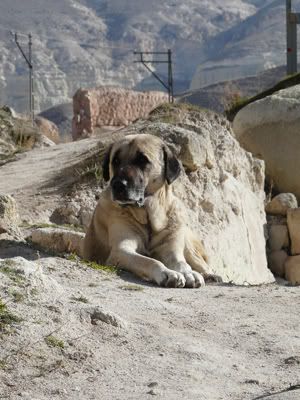
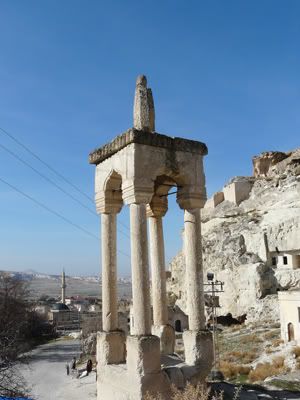
Till about 50 years ago, villagers were still living in the cave dwellings. They had all moved to the new village built by the government after the facade of these caves collapsed.
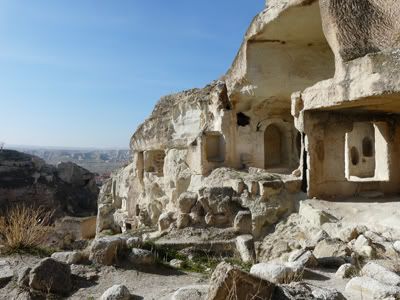
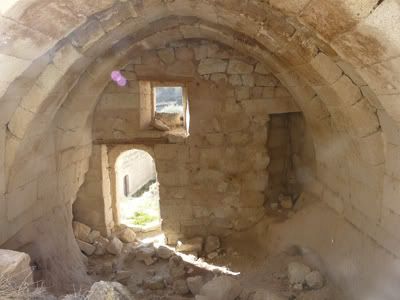
A power switch casing was what was left that modern people had lived in these ancient cave buildings.
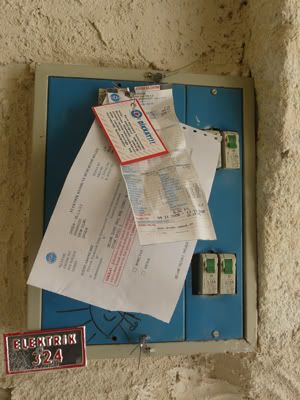
Our sumptuous lunch was included as part of the tour package.
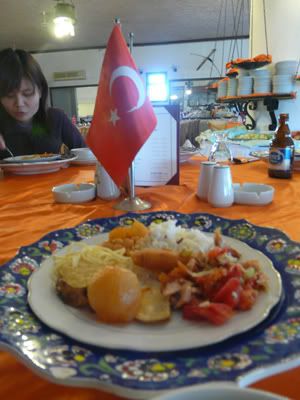
Outside the restaurant, a couple of old ladies were selling some Turkish embroidery.
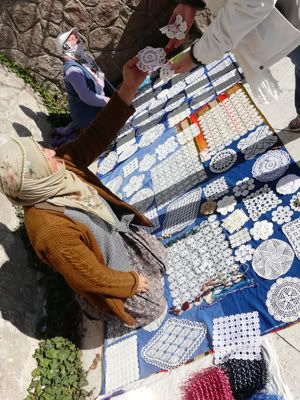
After lunch, we visited the underground city of Kaymakli. It was featured in the History Channel series, "Cities of the Underworld". The eight-storey underground city was self-sufficient and boosted its own defence features. Defenders of the city employed various tactics to trap invaders. Giant stone doors like this stopped invaders or lock them in rooms to starve to death.
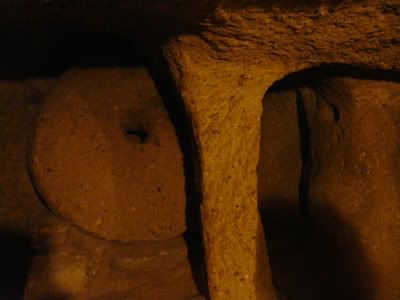
Narrow walkways meant that invaders could only walk in single file and were vulnerable to attacks from the defenders. Boiling oil was often poured through the holes in the ceiling onto the invaders in these walkways.
Of the eight levels, only four floors were opened.
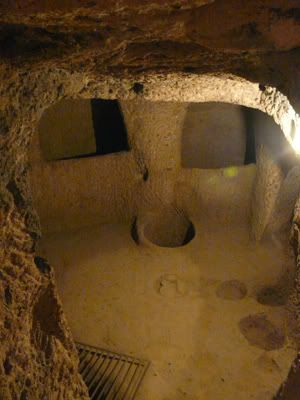

Staircase down to the lower levels...
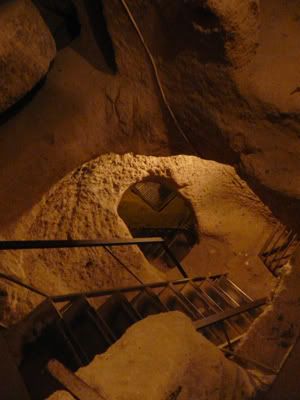
From the Hittites to the early Christian refugees, the city was progressively carved out by its inhabitants.
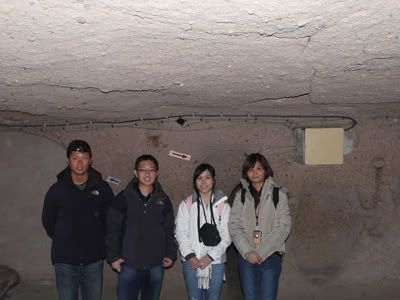
A cooking place...
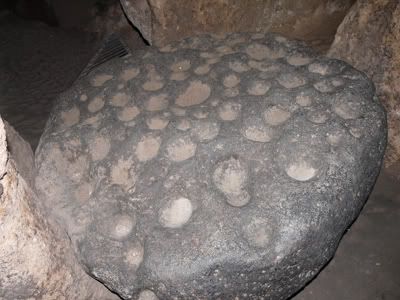
From Kaymali, we made our way to a Onyx factory. Onyx is a special form of quartz. The factory specialised in making ornaments such as chess sets, "onyx eggs". I managed to get mini onyx egg souvenir used in the demonstration, by answering some simple questions. :-)
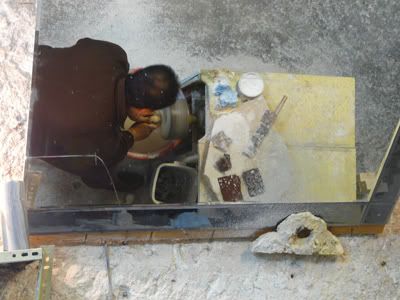
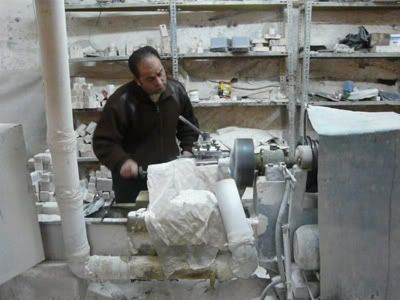
One of the newly opened luxurious cave hotel along the way.

A breathtaking view of the highest peak around the region.
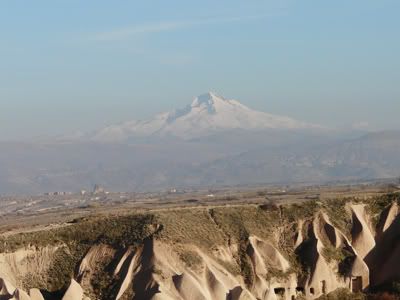
In the foreground is the Pigeon Valley.

It is named after the pigeon cotes on the rocks of the valley. The pigeon droppings provided fertilizer for the farmers.
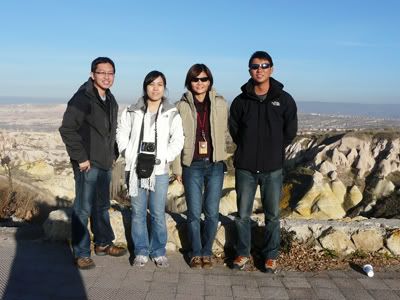
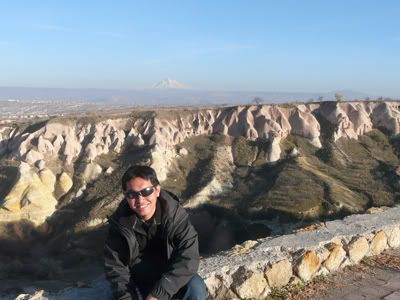
It was only 4+ when our day tour ended. We had read about Cappadocia being famous for its wine. A quick check on the Internet, we found the name of one of the winery. The cab driver at the bus station agreed to bring us there. The Turasan Winery...
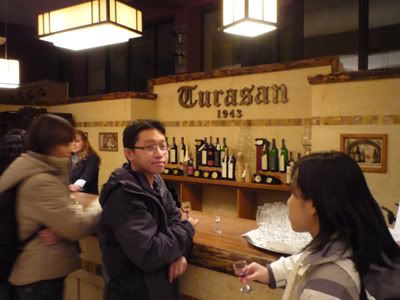
We managed to buy a bottle of red wine and some raisins just before it closed for the day!
Where else to better enjoy good wine than a small warm restaurant in the town central!
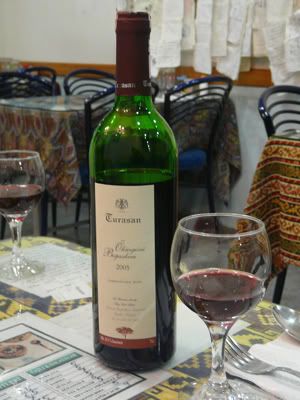
Cheers!
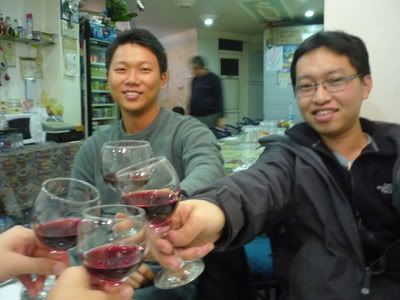
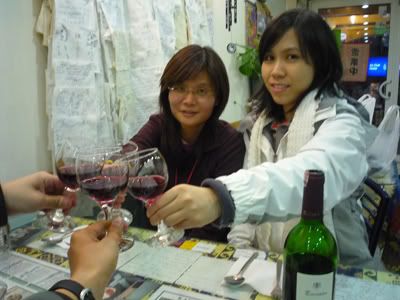
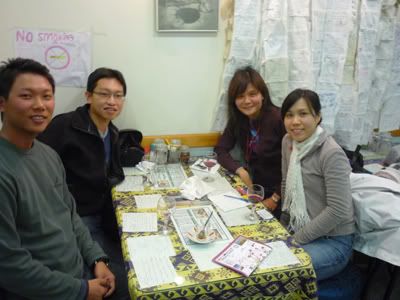
I can't really remember the name of the dishes now, but I think they were delicious!
The salad...
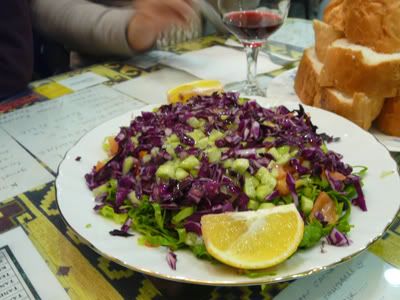
Our favorite bread. We loved the pointy ends. Hee.
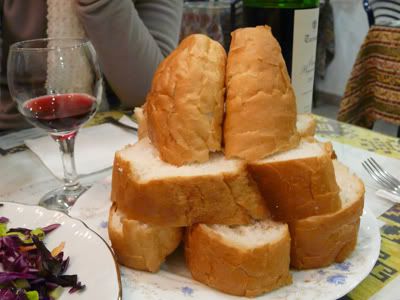
The meat and rice...
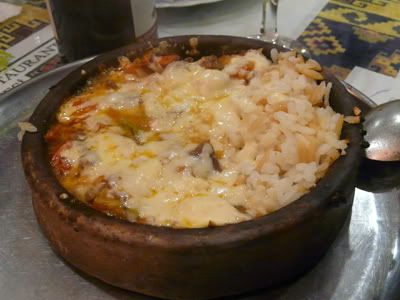
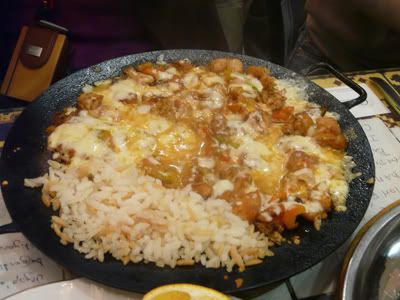
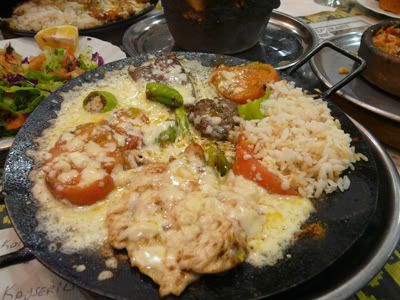
The corba aka soup.. er.. not the software standard..
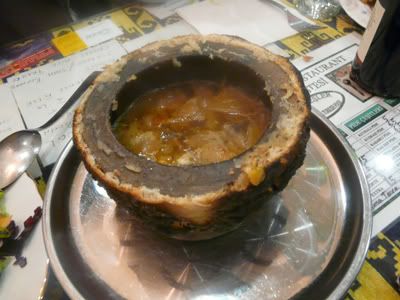
Finally, a group photo with the friendly owner, before we made our way back to hotel for an early night rest.
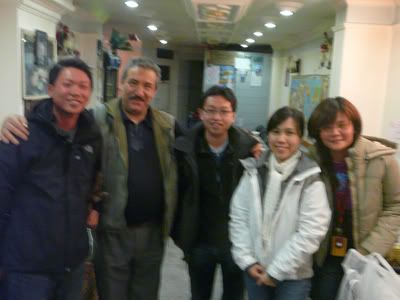
More of the valley awaited our exploration the next day!

At Ürgüp, our hotel picked us up from the bus station in a mini-bus. Our hotel, Cappadocia Cave Inn Hotel, is a ten minutes walk from town centre. It is converted from a 100 years old family house. Carved out of the sandstone, the rooms were really impressive.

We were promptly served with apple tea. 发发 took a walk around to grab some breakfast for us, while I brushed my teeth and unsuccessfully tried to bathe. It was too cold!
Our tour guide arrived at 9 am. He is the owner of the tour agency. A Canadian lady joined us in the tour. She is 60+, on a short to Turkey from UK where she visited her daughter. Tho' a little on the plump side, she was still quite fit and not look her age at all. From now on, the description gets a little fuzzy as the guide wasn't very clear in explaining where we went.
The girls "enjoying" the breakfast in the bus, on our way to the first destination.

Our first stop was the 3km hike of the Rose Valley.

The landscape of Cappadocia was formed from the remains of the volcano mountains Erciyes, Hasandag and Gulludag, millions of years ago. The combination of erosion by rain, water from rivers and lake, and strong winds, resulted in the formation of the peculiar landscape. Rose Valley was named after the pink tints visible in some of the weathered rocky sides.
























Of the eight levels, only four floors were opened.













Where else to better enjoy good wine than a small warm restaurant in the town central!




The salad...







Comments